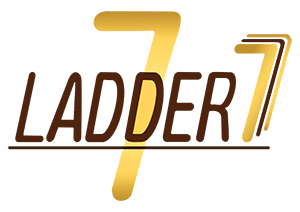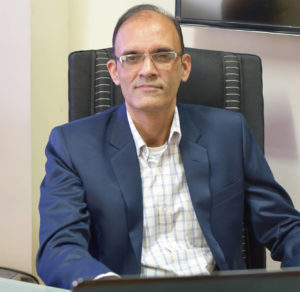- +91 9920132979 / +91 9322866643
- [email protected]
Retirement offers a chance to break the shackles that bound them to the desk & live a life that’s no longer monotonous & ordinary, is far more spontaneous, relaxed & vibrant.
There are others for whom retirement would mean that they can now follow their passions, they have all along been unable to pursue. Some are drawn to social work, others lean towards environment protection. Some veer towards religious/ spiritual pursuits, teaching/ mentoring is meaningful to some, giving back to society in various forms spurs some…
But, whatever one may intend to do in Retirement, one thing becomes important. Retirees want a reliable stream of income in retirement and want to be able to maintain the lifestyle they were always used to. As financial advisors, properly positioning their assets for the retirement phase & setting up a regular income for them becomes our No.1 job.
Let me take you through how we go about the same:
Understanding the retirement mindset
It is important to understand what the retiree has in mind, in their retirement phase. One needs to understand whether they will continue in the same city or move elsewhere, what they intend to do in retirement, their travels, intention to work, the pursuit of hobbies or other activities, etc.
A lot depends on this. It is based on this that one may arrive at a conclusion of how much would be needed going forward. Once that is understood, a strategic plan of how to allocate the resources for the upcoming phase of life would need to be drawn up. That would include a whole bunch of things.
There are a couple of things to consider right at the start of the financial planning exercise.
Medical contingencies
One hopes that there will be a medical insurance in place, for hospitalisation situations. Else, that needs to be set up. In many cases, that is easier said than done, as there may be medical issues due to which a policy may not get issued. Or it may come with restrictions & higher premium as to make the proposition meaningless.
In this situation, the only recourse is to set up a good contingency fund to take care of hospitalisations. The other option is to opt for group medical insurance covers, available when one is a bank account holder. These medical policies come at a much lower cost than regular policies. There may be a cap on how much insurance one can avail of – but that should be fine. At least, one will have some cover.
Apart from this, one may also need to consult a doctor, do health checkups, go for dental treatment, ophthalmic investigations, and interventions, etc. All of this can cost some money. But, compared to hospitalisation, the amount that may be spent on these will still be small. Some medical insurance policies do not cover some of these. But, most situations are not covered – that is the reality. That means that we need to provide money to cover such out of pocket situations as well.
Liquidity
In the absence of a steady flow of income, a sudden spurt in expenses can prove to be troublesome. Sudden requirements cannot be ruled out, however.
The only way out is to provide a good liquidity margin to fall back upon when unforeseen expenses come calling. In retirement, this liquidity margin needs to be somewhat big as a good portion of one’s corpus would have been invested for generating an income & another portion will be in long term assets. A good amount of liquidity to provide would be about one full year of expenses.
Considerations while investing
Once contingencies and liquidity needs are taken care of, we can move to investing appropriately & set up an income. Before doing that, any good financial planner will give careful thought to the parameters to bear in mind while selecting investment candidates.
Some of them are –
- Risk/ Reward considerations
- Income generation possibility & frequency
- Tax efficiency
- Ability to offer stable income
- Liquidity
- Safety of capital employed
Based on all these & the requirements of the clients, financial advisors/ planners would choose appropriate products.
Choosing the right mix
Just because one is in the retirement phase, one cannot choose all investments in debt instruments to keep the risk low/ minimal. The return potential in such a case would be low and compounding on a long-term basis would be stunted. So, while one needs to invest in Debt instruments for safety & regular/consistent payout of interest, it has it’s downsides too. Debt instruments offer low returns and are not tax efficient in most cases. Hence, if one is invested only in fixed income instruments, the corpus will not grow & hence will not last long.
Today, people are living into their nineties and hence making the portfolio work for longer periods is becoming more and more important.
For that reason, one would need to invest a certain portion of one’s wealth into growth-oriented assets. The most convenient among them is Equity oriented investments. In equity, while there is volatility & risk inherent in it, it can offer very good returns over the long-term. Hence, a certain allocation in it is inevitable, even in the retirement phase.
Typically in the retirement phase, it is recommended to have between 15 – 40 % of the assets in equity, depending upon the risk profile of the person concerned, goals in retirement, medical condition, expected longevity, etc.
However, while choosing equity assets, we need to be careful to pick out the right kind of products. If it is equity Mutual Funds, Large-cap funds, Hybrid funds, Index funds & maybe even multi-cap funds may fit the bill. Equity assets may be well suited as a long-term investment option.
Setting up an income in retirement
Regular income is important for a person in retirement. There are several products available, which will offer monthly/ quarterly returns – like Bank FDs, corporate FDs, Senior Citizen Savings Scheme, Pradhan Mantri Vaya Vandana Yojana, etc. These products are not very tax efficient & returns are subject to tax as income.
Debt MFs can be used for generating an income too. Systematic withdrawal is possible from Debt Funds. The withdrawals are subject to capital gains tax due to which the effective tax is low.
Tax-free bonds can be bought from the secondary markets, which are currently offering about 6.2%. This would be good for those in the higher tax brackets.
Perpetual Bonds/ NCDs are also available in the secondary market and is another option to consider. The returns from these are treated as income. However, these products are offering better yields on a pretax basis and hence are attractive. These products, along with perpetual bonds and NCDs do not offer monthly/ quarterly returns, which is a negative for those who are looking for regular income.
Some setup immediate annuity through a pension plan. Pension returns are low & even that return is taxable as income. Hence, it is normally not suggested.
In conclusion
At retirement, it is important to assess the requirements in the upcoming phase & come up with appropriate asset allocation. One needs to set up the necessary income from the portfolio & allow other investments to compound & grow.
One needs to review the expenses once a year. Also, a review of the portfolio is suggested once every year. Make changes, if necessary.
Retirement period should deliver financial freedom & be an enjoyable & peaceful phase of life. It can be that way if one’s finances are in order. The basic principles are outlined here & would help in planning the finances in retirement. But, since it would be one’s lifetime wealth & there is no margin for error, a professional financial planner can certainly add tremendous value.

